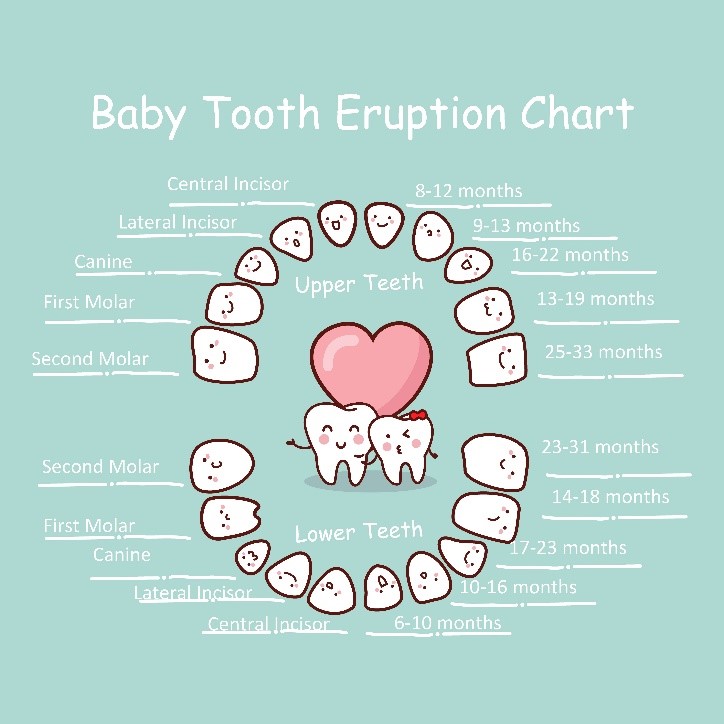Baby teeth, also known as primary or deciduous teeth, are in fact as important as adult teeth. Healthy baby teeth are needed for chewing, speaking, and holding open space in the mouth to allow the adult teeth to erupt when it is time.
When a baby is born they will usually have 20 primary teeth developing under the gums, with the first ones to come through the gums at the front of the mouth, usually within 6 months of age. Most children will have had all of their baby teeth erupt into the mouth by age 3.
When should I bring my child to the Dentist for their first visit?
We recommend that this visit should take place within 6 months of the first tooth appearing in the mouth, and no later than your child’s first birthday. This is also recommended by the Australian Dental Association.
Why so early you may ask? They are so little, how can they participate in a dental visit?
-
Your dentist can teach your child how to clean their teeth properly, explain the link between diet and good oral health, advise on fluoride needs, oral care products, and check for tooth decay and normal development
-
Secondly, this will connect your child with a “Dental Home”. Our surgery will act as a ‘home base’ for your child’s dental care from year to year. We will know you and your family and your specific needs, so we can provide the best care
-
We can perform preventive treatments, such as fluoride varnish application and as they get older, fissure sealants. Prevention can save time, money and teeth!
-
It helps your child become familiar with sights sounds and smells of the dental office
Top 10 Tips for your child’s first dental visit
-
Make an appointment for your child’s first dental visit between the eruption of their first tooth and their first birthday.
-
Try to arrange a morning appointment time, as your child is more likely to be rested and co-operative.
-
X-rays will be taken at age 4-5 years. This is to make sure we detect any cavities hidden ‘between’ the teeth, which cannot be seen simply by looking. Cavities between the teeth are not easy to see until they become very large, and often by this time it is too late to save the tooth!
-
Be positive! Children will pick up on any anxiety or negative feelings you may have about visiting the dentist yourself. This is an exciting, momentous occasion for your child, why not bring a phone and take a selfie
-
Never bribe your child to go to the dentist or use the visit as a punishment or a threat. Make it a normal part of routine, not a ‘special event’
-
Avoid talking about whether it will (or won’t) hurt. Use positive terms about going to the dentist, such as “seeing the tooth fairy’s friend” or “going for a ride in the dental chair”
-
We have a TV on the roof and some very groovy sunglasses which will help your child to feel much more at ease in the dental chair
-
Avoid using words that may scare your child, such as ‘drills’ and ‘needles’ , we have our own special words which we use to explain these things in a non-scary way.
-
Play dentist at home, practice counting your child’s teeth
-
Avoid making threats like “if you don’t brush your teeth the dentist will pull them all out” as this is likely to reinforce any feelings of fear

